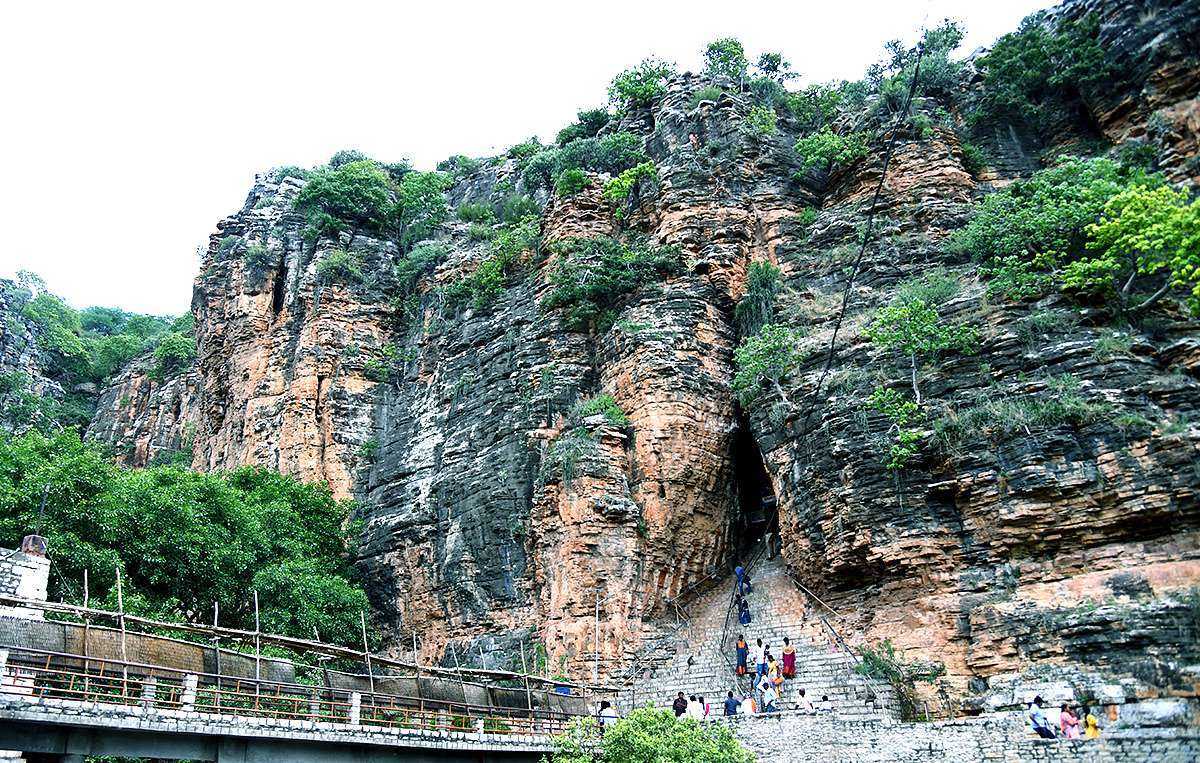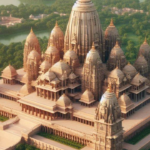Nestled in the picturesque hills of the Banaganapalle region in Andhra Pradesh, India, the Yaganti Temple is a living testament to the rich tapestry of history, culture, and spirituality that defines the Indian subcontinent. This ancient temple is dedicated to Lord Shiva, the presiding deity, and has a history that spans several centuries. The Yaganti Temple\’s storied past is a fascinating journey through time, exploring the legends, architectural marvels, and enduring devotion that have shaped its identity.
The Legend of Yaganti
The origins of the Yaganti Temple are shrouded in myth and legend. According to local folklore, the temple has a connection to the great sage Agastya, who performed intense penance at this very site. It is believed that the name \”Yaganti\” itself is derived from the words \”Yagna\” (fire sacrifice) and \”Anti\” (ending), alluding to the sage\’s transformative spiritual endeavors here.
Architectural Grandeur
The Yaganti Temple showcases an exquisite blend of architectural styles, drawing influences from various dynasties that ruled the region over the centuries. One of the most striking features is the sprawling Nandi (the sacred bull) statue carved from a single rock, which stands as a majestic sentinel at the temple\’s entrance. This colossal Nandi is one of the largest in India and adds to the temple\’s architectural allure.
Historical Significance
Yaganti Temple has a rich and varied history. Over the years, it bore witness to the rise and fall of numerous dynasties, including the Chalukyas, Cholas, and Vijayanagara rulers. These rulers not only contributed to the temple\’s structural enhancements but also enriched its cultural and religious significance. The temple has been a focal point of pilgrimage and worship for centuries, drawing devotees from all corners of India.
Religious Practices and Festivals
Devotees visit the Yaganti Temple to offer their prayers to Lord Shiva and participate in various religious rituals. The temple conducts daily pujas (prayers) and abhishekams (ritual baths) of the deity. Maha Shivaratri, the Great Night of Shiva, is celebrated with immense fervor, with thousands of pilgrims thronging to the temple to witness the grand festivities.
Historical Evolution
Throughout its existence, Yaganti Temple underwent several renovations and structural modifications. The Chalukya dynasty played a significant role in expanding and beautifying the temple complex. Later, during the reign of the Vijayanagara rulers, the temple experienced a cultural renaissance, with artistic embellishments and contributions from various scholars and poets. The temple\’s enduring architecture and sculptures continue to captivate visitors.
Preservation and Restoration
Like many ancient monuments, Yaganti Temple faced the threat of decay over the years. Neglect, environmental factors, and natural wear and tear took their toll on the temple\’s structure. However, concerted efforts by the government, archaeological departments, and local communities have worked tirelessly to preserve and restore its grandeur.
Spiritual Significance
Beyond its historical and architectural significance, the Yaganti Temple holds immense spiritual importance. The serene natural surroundings of the temple, coupled with the divine aura, make it an ideal place for meditation and introspection. Devotees come seeking spiritual solace and blessings, finding tranquility amidst the verdant hills.
The Yaganti Temple complex encompasses not only the main shrine dedicated to Lord Shiva but also smaller shrines devoted to various deities. The sprawling campus includes a kalyana mandapam (marriage hall) for conducting religious ceremonies and weddings. The presence of a perennial spring, Pushkarini, adds to the temple\’s spiritual significance.
Local Culture and Economy
The temple has played a pivotal role in shaping the local culture and economy. It has provided livelihoods for many who offer services to the pilgrims, such as priests, flower vendors, and local artisans. The town of Yaganti thrives on the economic activities generated by the temple, further strengthening its cultural ties.
Yaganti Temple, with its enduring spiritual legacy and architectural splendor, stands as a timeless testament to the grandeur of India\’s cultural and religious heritage. Its future remains bright, as it continues to inspire awe, devotion, and cultural appreciation.
Yaganti Temple Timings :
| Monday | 6 am–1 pm, 3–7:30 pm |
| Tuesday | 6 am–1 pm, 3–7:30 pm |
| Wednesday | 6 am–1 pm, 3–7:30 pm |
| Thursday | 6 am–1 pm, 3–7:30 pm |
| Friday | 6 am–1 pm, 3–7:30 pm |
| Saturday | 6 am–1 pm, 3–7:30 pm |
| Sunday | 6 am–1 pm, 3–7:30 pm |
Conclusion
The Yaganti Temple is not just a place of worship; it is a living narrative of India\’s profound history, spirituality, and cultural heritage. As it stands amidst the majestic hills of Andhra Pradesh, this temple bridges the past and the present, serving as a beacon of faith, artistic excellence, and devotion. In its timeless beauty and enduring spiritual significance, Yaganti Temple remains an eternal source of inspiration for generations to come, reminding us of the enduring power of faith and artistry.






